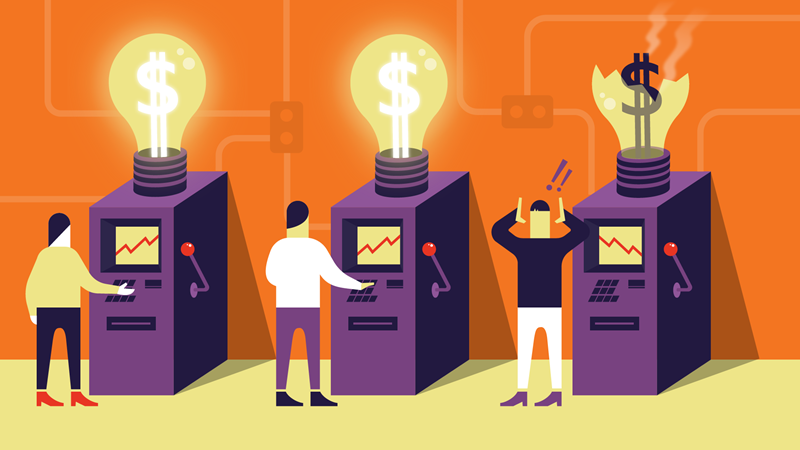
Does investing in innovation work? Can firms prosper by devoting resources to the generation of knowledge? It’s generally accepted that such investments do pay off. “In many OECD countries,” says a 2016 Organisation for Economic Co-operation and Development document, “firms invest as much in the knowledge-based assets that drive innovation, such as software, databases, research and development, firm-specific skills and organisational capital, as they do in physical capital, such as machinery, equipment or buildings.”
Economists also embrace the notion. Indeed, in October 2018, economist Paul Romer received the Nobel prize for his work on “endogenous technological growth,” which holds that investing in innovation is central to economic growth.
But measuring the relationship between innovation investment and economic growth has been difficult. As the OECD stated: “But while innovation is all around us, its impact on growth and wellbeing is not always evident and remains hard to quantify.” It echoes the famous 1987 remark by Nobel Laureate Robert Solow, whose framework Romer extends: “You can see the computer age everywhere but in the productivity statistics.”
In recent research, Minneapolis Fed consultant Andrew Atkeson, with UCLA colleagues Ariel Burstein and Manolis Chatzikonstantinou, develops an endogenous growth model that provides quantitative estimates of the impact of investing in new knowledge. And though their paper is dense, starting with its fairly inscrutable title—“Transitional Dynamics in Aggregate Models of Innovative Investment”—their work sheds much-needed light on the mystery of endogenous growth.
Background on endogenous growth
Economists have long recognized that economic value is created not only by capital and labor, but also by ideas—instructions and methods for using workers, machines, and materials to create valuable things. Think of formulas for medicines and soft drinks, designs for automobiles or computer chips, or algorithms for search engines and artificial intelligence.
Economies can grow by investing more capital or hiring more labor, but at constant or decreasing returns to scale—not increasing. The primary driver of growth, economists knew, lay elsewhere: technological innovation. But they couldn’t identify the incentives behind it, the economic factors that explained why (and how much) firms spend on R&D. Growth remained exogenous to growth models—external and unexplained.
Romer’s insight was that economic growth springs from intellectual discovery because ideas are “nonrival.” An infinite number of people can use the same idea without reducing its availability to others (unlike capital and labor). The result is increasing returns to scale; doubling the number of new ideas more than doubles output: growth.
Romer incorporated this concept into the standard growth model—thereby making growth endogenous—by demonstrating, as the Nobel statement puts it, “how economic forces govern the willingness of firms to produce new ideas and innovations.”
To invest time and money developing new ideas, inventors need a financial incentive. But since new ideas are easily copied, benefiting people who have no role in their creation, ensuring adequate compensation for inventors requires special treatment.
Romer explained that making intellectual discoveries “partially excludable”—sharable only by those given rights to their use—provides inventors the right incentive. Government plays an essential role by enforcing patents and licensing rights that create a measure of profit for inventors. Governments can also boost R&D with incentives. (Inventors also protect their ideas with encryption and other secrecy measures.)
But these exclusions are partial; patents have time limits and, as other economists showed, new competitors can develop similar but better products or find better production methods. If excessive, this type of competition, termed “business stealing,” can actually reduce aggregate growth by hurting initial inventors.
Measuring the impact of innovation investment
As appealing as the theory is, it has proven difficult to pin down empirically. How much productivity growth will result from, say, a 10 percent boost in researcher hiring? Precisely how should investments (and incentives) be directed to have maximum impact?
Atkeson, Burstein, and Chatzikonstantinou approach the problem by first building a workable mathematical model that seeks to incorporate, or “nest,” key ideas developed by economists since Romer’s initial formulation. Two crucial features are
- the novelty of innovations—are they new inventions (“expanding varieties”) or improvements on existing inventions (“business stealing”) and
- the productivity of the research technology—Romer’s initial description, or diminishing research productivity as total factor productivity increases (“ideas get harder to find”), or diminishing research productivity due to proliferation of products.
The next step is to estimate values for two statistics that are crucial in shaping the responsiveness of productivity growth: “impact elasticity,” how much productivity grows in response to allocating more labor to research; and “intertemporal knowledge spillovers in research,” how long this impact persists.
An inconclusive bottom line
But for the general reader, the economists’ most interesting results are perhaps their calculations of the impact on productivity of changes in policy or other factors (like population growth rates or monopoly profit levels) that encourage innovation investments by firms.
Over a 20-year time span, policy initiatives or changes in the economic environment that lead to a sustained increase in innovative investment by new and existing firms are likely to have a “modest” impact on productivity. What does “modest” mean? A policy or other change that induced a permanent 10 percent increase in spending on research economywide would raise productivity by no more than 0.28 percent after the first year and no more than 5.5 percent after 20 years.
Over longer time spans, and for general economic welfare, the impact of policies or changes that have uniform impact on new and existing firms are “highly uncertain.” Some models estimate that such changes could have significantly positive impact on welfare; others forecast slightly negative effects.
Why so uncertain? In brief, the estimates depend on the extent to which hiring more researchers runs into diminishing returns. Would a permanent increase in spending on research continue to lead to increased productivity growth year after year? Or would the boost to productivity growth from additional researchers peter out over time as new ideas become harder to find? The economists refer to considerable uncertainty about this, the second key statistic, intertemporal knowledge spillovers.
Atkeson notes that there is a parallel here between policies to stimulate innovation and those to curb climate change, a relationship the Nobel Committee highlighted by awarding half of this year’s prize to economist William Nordhaus. In both instances, externalities central to the phenomenon (knowledge spillovers for innovation and greenhouse gas emissions for global warming) impede efficient outcomes. Well-designed policies can address these externalities but, in both cases, uncertainty regarding long-term outcomes is extreme because the exact nature of the relationships among all variables are themselves unclear.
Useful benchmark
In short, much remains to be done before economists can reach solid conclusions about the impact of innovation investment on productivity. Still, this research has made solid progress. “We see our results as a useful benchmark for future research aimed at developing models of endogenous technical change that are useful for quantitative policy analysis,” the economists conclude. According to this benchmark, policies aimed at stimulating firms’ investments in innovation are likely to have a modest impact on productivity and living standards over time horizons of a decade or two, but it is possible that such policies could have a dramatic impact on welfare over long horizons if intertemporal knowledge spillovers are large enough.





